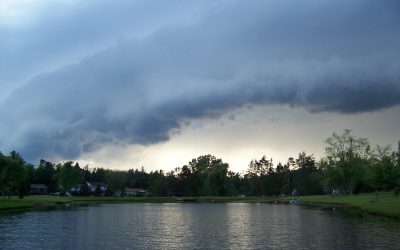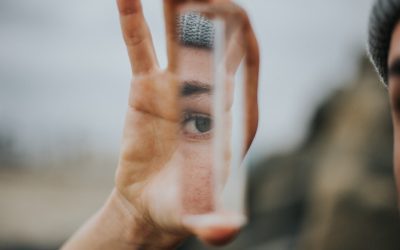For Byron Katie it was waking up on the floor of her residential care home watching a cockroach crawl over her foot.
For Jeff Foster it was the point of absolute despair ‘transform or commit suicide. There was no other option.’
For Roger Linden it was on a walk through Hamstead Heath in London ‘one second it was Roger – me – walking along the path, and the next moment it was as if something dissolved. And it took a fraction of a second and it was realised, ‘Oh there is no separate me’.
For Rupert Spira it was at a young age through deep resonance with non-dual teachings of Shankaracharya, Ramana Maharshi and Nisargadetta.
For Tony Parsons there had been the sense even as young as seven years old that ‘everything that was happening was somehow saying something other than me being separate.’
For Syd Banks it was a conversation with a psychologist and the words, ‘You just think you’re insecure’.
And for Michael Neill it was bursting into laughter at the fundamental truth of Syd’s words heard on a DVD, ‘Every human being has innate mental health’.
And so many other examples (some of which are beautifully told in the book ‘Conversations in non-duality, twenty six awakenings’ edited by Eleonora Gilbert.)
There is clearly no set way that Wholeness is revealed. Many teachers describe reaching absolute rock bottom, suicidal, hopeless, despairing and in that moment of everything being stripped away there is the realisation of what remains that is entirely unaffected.
But this does not have to happen. Many other teachers describe sudden realisations while out in nature or in the city, a sentence or a few words in a talk given by a teacher that profoundly shake the foundations of believed separation.
There is no prescription other than it has to involve the falling away of what was once believed, the structure of belief that says I am this and the world is that.
We’re looking in this chapter at what allows the mind to settle back into that truth. Many would say it doesn’t have to. It doesn’t need to, because the mind doesn’t really exist, it is simply momentary, transient experience. And on that basis, it could be said that it is irrelevant.
This is a tough one. It’s something that I struggle with a lot as part of this teaching. It is a very, very valid proposition, that if life is just this moment right now and this moment only consists of the essence of being-ness, then, whatever the experience is doesn’t matter because the Wholeness, the totality, the is-ness contains it all. It’s not separate from it.
This is the dilemma we have in this conversation. The seeking to see something or to have something realised is the only dilemma.
There is no possibility that “what we are” isn’t already home. We already are the thing. Which is why many non-dual teachers are absolutely uncompromising in closing down any conversation about self or form. The only issue is the thought of individuality and that issue or thought doesn’t exist.
Yet, at the same time, this experience of being other, of being isolated and separate – like a wave imagining itself separate from the ocean – that experience is torture. Because the whole system knows deeply that it is not true. To experience ourselves as being something that is separate from truth creates enormous suffering.
So, what do we do? Where do we go with that? How can the wave realise it is the ocean? And yes, the moment we start thinking in terms of a wave, we’re already creating an idea of separation. Talking about the mind, talking about us, me, you, talking about suffering, experience, reality… all these things are adding in more and more elements of separation, aren’t they? So, what do we do?
It seems to me, that there is value in finding ways for the experience of what we are, for the knowing of what we are, to align with what we know is true.
Ironically, the purpose to our life is to realise that there is no separate life, that there is no separate individual that any of this is happening to. The integration of the whole system with truth. The movement through the concepts, of separation, of fear, of shame, of insecurity, through the projection and imagined reality, through to this space that is all there is.
Seeking has a bad name because more often than not the seeking is about the attempt to stabilise the identity, to be someone, to make the separation. But actually, the impetus for the seeking, this sense that the lived experience of separation is not the truth of us, this is absolutely valid. It is just that the attempt to get rid of the suffering keeps the mind locked in its own creations.
Wholeness (truth) is revealed or unveiled by the dissolution of what is not real (mind, thoughts, beliefs, separation, apparent objectivity). We can see that the attempt to find Wholeness in the mind will always fail and will always lead to more of the very activity that is veiling what is being searched for.
What allows what is not true to fall away?
That’s the million dollar question isn’t it? Because the more fragile the ego, the greater the desperation to solidify the sense of being, and this attempt to stabilise the fraction veils the Wholeness.
Enquiry is one way. And perhaps no one has encapsulated this more cleanly and simply than Byron Katie in her ‘The Work’. Instead of the mind lost in fighting its own concepts of blame, harm, victim and villain, enquiry turns the focus on to what is true? It is fascinating to watch this incredible teacher in action. We, the audience, can see the participant completely lost in their own story of separation. Byron Katie brings them back to enquiry with loving rigour. And then it is almost as if we can see the mind reaching back beyond those beliefs that have dominated every waking hour to the foundation of existence. Is it true? The mind goes to its furthest origin and comes back with… no, it’s not, none of it is true. None of it is real in the way it was believed to be.
And again, it is important to say that enquiry in order to find Peace or freedom will not reveal anything. The unquestioned agenda of the mind to control emotions and experience is at work and will only hide the Peace and freedom that is right here, right now. The enquiry has to be genuinely open, no agenda, no attempt to control, no attempt to come up with the right answer or to impress the teacher or to say the right spiritual words.
Another way is the shifting of attention from what changes (mind, experience, labels, concepts, beliefs, separation) to what never changes, to what lies before all of the changing landscape of mind, to what gives rise to it.
As we saw in the previous chapter, what changes is enticing to a mind that is wired for story. It is so easy for the transient to grab the attention, especially when it seems to continually involve the life and death of our idea of self. It is no wonder that all attention is sucked into that tension-filled drama.
This is a shift from the drama, from the tension, from the intrigue and the survival of being this individual self in this world of separate form. A shift to the pervasive essence of what we are, that is touched in moments of flow, in moments of absolute presence or laughter or when all barriers drop, all the thoughts drop, all the concepts drop, and there is only beingness, completely whole just being.
The glimpses of this start to become the truth and the navigation for life. Whereas before, the mind was the navigation – the mind with its calculations, its judgements and its predictions, its second guessing, calculating how to orientate within a thought-created world.
The whole system starts to orientate around the understanding of wholeness. It becomes literally a ‘no-brainer’. It is the deepest most essential relaxing rejuvenating, energizing, sane, truthful space for the mind to hang out in.
This is not about denying these experiences of separation. Turning away from them, numbing or distracting from them, spiritually overwriting them, pretending they don’t exist only makes them appear more real and more permanent. This is about staying with the experiences to see the essential nothingness of them.
Let’s take an example. Imagine someone who you’ve had a difficult relationship with, and, in the past, you might have seen them as someone to blame, as someone responsible for how you are feeling, as someone who intentionally decided to do these things that upset you.
There’s a you: defensive, vulnerable, upset, offended, hurt. And there’s a them, who is intentionally hurting you. At that level, the experience of the other is locked in to this apparent reality of separation, and all conversations, all interactions are taking place in that. The past gets dragged up and the future projection comes in and we’re mind-reading them and that is an absolutely unquestioned experience of two separate objective entities. There’s me and them.
Then, we embark on this conversation and through it several things happen. Initially we start seeing the mirror that they represent, that every experience of them is a creation of mind and that creation of mind is coming from our own insecurities, our own shame, our own vulnerabilities.
Ideas of blame fall away as we consider that there is no self, doing these things. The behaviour of the other is just learned conditioning: our response to the other is learned conditioning.
We start seeing these two robots, these two units in a sort of dance together: a dance of conditioning, a dance of programmed reaction. That interaction of the robots becomes less and less interesting because what is the truth here? What is animating these robots? How are these robots even brought into existence?
There’s now less focus on the drama of separation and the separation starts to dissolve anyway, as it’s not having the attention that fuels it.
There’s more space, more presence, more capacity. There is more possibility to sit with this person and hear them. There is the realisation that, we are them. We are them. And that knowing, that falling away is our orientation now. Because, until there is that experience, that knowing, we are not in reality. We’re in a made-up land of others.
That can be how wholeness is realised everywhere but it is particularly poignant with other people because that is where the veils of separation are more and more dense, where it seems there’s so much to protect.
This is a whole new orientation within truth. Any sense of contraction, or tension, suffering, or isolation is an indication that the system is momentarily operating on a programme that isn’t aligned into truth.
Suffering is the design.
It is separation itself that reveals wholeness.





Just what I needed today. Seeing the problem I have with someone else is less real and dense than I thought, through perspective and innocence. I think ‘Sane’ needs to be added to my reading list. Thank you Clare